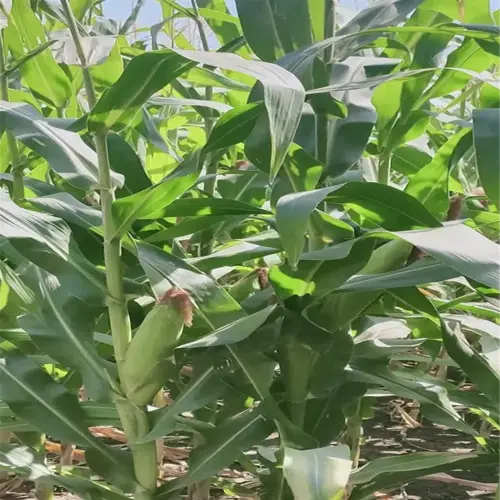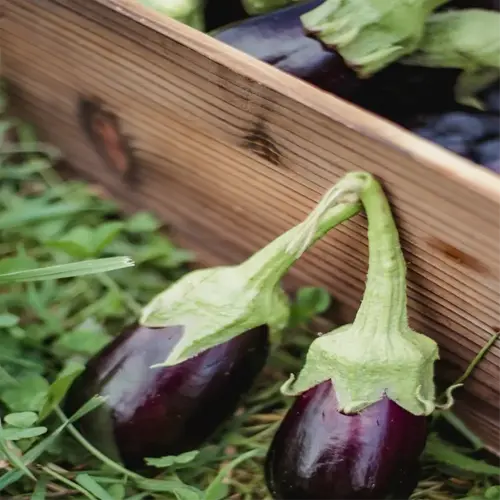How to Grow Figs: Expert Tips for Thriving Trees

Written by
Tina Carter
Reviewed by
Prof. Martin Thorne, Ph.D.Learn how to grow figs by selecting cold-hardy varieties for your climate zone
Ensure well-draining soil with compost to prevent root rot in fig trees
Water deeply but infrequently, reducing before harvest to boost sweetness
Prune in late winter to shape trees and increase sunlight exposure
Protect figs from pests with neem oil and proper sanitation practices
Harvest figs when necks soften and fruits droop naturally on branches
Article Navigation
Picture yourself harvesting figs warmed by the summer sun from your yard, and enjoy their honeyed sweetness with every bite! The first step in how to grow figs is to select the variety that grows best in your area. While you're unlikely to find the evergreen fig growing in your area due to colder winters, you can plant your fig with some care and in a protected location and, with some planning and care, enjoy plenty of fig fruits!
There's a good chance you don't need a strong interest in gardening to be successful. My neighbor in Zone 6 grows Chicago Hardy figs and they come back each year after freezing winters. Just consider good drainage and a place that gets at least eight hours of sunlight. Don't let the roots sit in wet soil, it's the fastest way to lose a tree.
A lot of new growers make pruning into a far more complicated concept than it needs to be. I think it is straightforward: remove deadwood at the end of winter, prune branches to allow airflow, and pinch summer growth to redirect energy. This system allowed me to double my harvest on my Celeste fig last year, and it did not require special tools or fertilizers.
The watering patterns used in trees can affect fruit quality for better or worse. A deep soaking once every week is far better than watering just a little every day. During dry spells, I give each of my trees five gallons of water in each watering session. As the fruits begin to soften, to concentrate sugars, I reduce the amount of irrigation. Be patient, as many underripe figs will not sweeten!
Choosing the Right Fig Varieties
Choosing to grow the correct fig varieties will completely change your harvest. If you're in Zone 5-7 where cold weather even produces sub-zero winters, Chicago Hardy will die back in the colder months, but regrow each spring season. If you're in hot weather or Zone 9-11, Brown Turkey figs can produce two crops a season before browning.
Breba crops are most important in areas with late summer starts. My Desert King figs ripen brebas in July while the main crop would have difficulty ripening in Washington coastal areas. Breba crops are sweeter with jammy interiors and make the best preserves. If frosts may cut seasons short, always choose dual-crop varieties.
Taste profiles determine what you will want to do in the kitchen. What you may enjoy eating fresh, like Violette de Bordeaux, is too intense on the berry side of the flavor profile and is best for eating fresh. Kadota has a mild sweetness and is ideal for canning. You should check for disease resistance as well, my LSU Purple had a bad case of rust fungus last summer when other trees succumbed to the humid Louisiana summer.
Containers create opportunities for fig growing in limited space! I have Little Miss Figgy, and she is under six feet tall but produces over 80 ripe figs a year on my terrace! To ensure longevity, I encourage you to plant figs in 15-gallon pots with drainage holes. I also like to add perlite to the soil to ensure that the roots do not become waterlogged.

Celeste
- Fruit: Small (1-2 inch/2.5-5 cm), light brown skin with violet undertones
- Leaves: Deeply lobed with rough texture. 3-5 lobes per leaf
- Climate: Thrives in zones 5-10. Requires 100 frost-free days minimum
- Yield: 20-30 lbs (9-13.6 kg) per mature tree annually

Brown Turkey
- Fruit: Large (2.5-3 inch/6.3-7.6 cm), bronze-purple skin with amber flesh
- Leaves: Five-fingered shape with smooth edges. 10-12 inch (25-30 cm) width
- Climate: Ideal for zones 7-11. Tolerates 95°F (35°C) summers
- Yield: 50-80 figs (22.7-36.3 kg) on 4-year-old trees
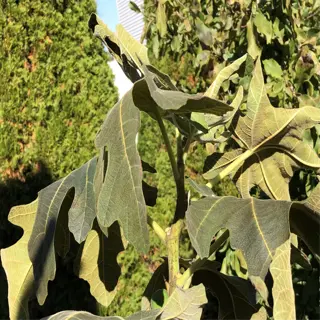
Chicago Hardy
- Fruit: Medium (1.5-2 inch/3.8-5 cm), purple skin with pink flesh
- Leaves: Thick leathery texture. Survives snow cover up to 2 weeks
- Climate: Zones 5-9. Requires winter mulch below 0°F (-18°C)
- Yield: 15-25 lbs (6.8-11.3 kg) with annual dieback recovery

LSU Purple
- Fruit: Medium-large (2-2.5 inch/5-6.3 cm), dark purple with strawberry interior
- Leaves: Glossy surface with 3 primary lobes. Resists fungal rust
- Climate: Humid zones 8-11. Needs 120+ frost-free days
- Yield: 40-60 figs (18-27 kg) on 5-year-old trees
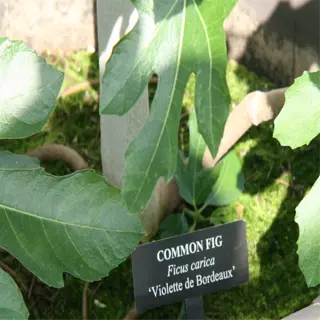
Violette de Bordeaux
- Fruit: Small (1-1.5 inch/2.5-3.8 cm), dark purple with red flesh
- Leaves: Compact size. 5-7 lobes with serrated edges
- Climate: Zones 7-10. Container growth recommended north of zone 7
- Yield: 10-15 lbs (4.5-6.8 kg) in 10-gallon pots

Panache Tiger
- Fruit: Yellow-green stripes, 2-2.5 inch/5-6.3 cm. Honey-like sweetness
- Leaves: Narrow lobes with pointed tips. Sensitive to frost
- Climate: Zones 9-11. Requires full sun and dry summers
- Yield: 30-40 figs (13.6-18 kg) in optimal heat
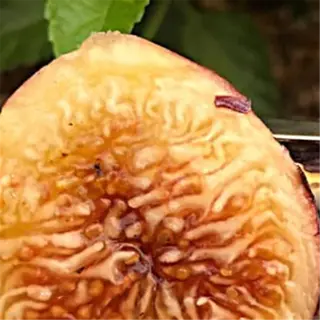
Peter's Honey
- Fruit: Golden-yellow skin, 1.5-2 inch/3.8-5 cm. Intense sugary flavor
- Leaves: Broad and flat with shallow lobes. Prone to leaf spot
- Climate: Zones 8-11. Needs protection from heavy rains
- Yield: 25-35 figs (11.3-15.9 kg) on 3-year-old trees
Planting Figs for Success
Planting your figs in containers allows you to manage root growth, whereas planting in the ground allows the tree or shrub to stretch its roots out in the soil. I have grown Celeste figs in pots and in the ground - and my experience, the potted figs produced fruit two years sooner because the roots are contained. If you are planting in heavy/poor drainage clay soil, mix in up to 30% perlite to improve drainage.
Sandy soils don't sufficiently retain moisture for figs and drain too quickly. Here's my solution: I mix 40% by volume compost with 20% bentonite clay. In Zone 6, I plant trees at least 4 inches and sometimes 6 inches deeper than nursery level. This burying graft unions safe below frost lines in brutal winters.
Root restriction is not cruel, it can be clever. As an example, my planted Violette de Bordeaux focused energy on fruit instead of roots in the pot. The use of fabric grow bags also allows for natural air pruning. If you're growing figs in the ground, make sure to stay at least 15 feet away from any structure to prevent anything such as invasive roots bitcoin cracking foundation.
Mulch is especially important in cold climates. After Thanksgiving, I pile on 8 inches of straw around the trunks. By spring, new shoots come through unchanged. For containers, I wrap the pots in bubble wrap. That is how my Chicago Hardy survived -9°F last January.
Soil Mix Formula
- Ideal Composition: 50% compost, 30% coarse sand, 20% topsoil
- Clay Soil Fix: Add 25% perlite for drainage
- Sandy Soil Fix: Mix in 20% bentonite clay
pH Adjustment
- Target Range: 6.0-6.5
- Lower pH: 1 cup (240 ml) pine fines per 5 gallons (19 L) soil
- Raise pH: ½ cup (120 ml) agricultural lime per 5 gallons (19 L) soil
Planting Depth
- Cold Zones (5-7): Bury rootball 6" (15 cm) deeper than nursery pot
- Warm Zones (8-11): Keep rootball level with soil surface
- Drainage Layer: 4" (10 cm) gravel at hole base for wet climates
Planting Timing
- Spring Planting: After last frost (March-May in zones 5-7)
- Fall Planting: 6 weeks before first frost (Sept-Oct in zones 8-11)
- Soil Temp: Minimum 50°F (10°C) for root establishment
Spacing Between Trees
- In-Ground: 15-20 ft (4.5-6 m) between trees
- Containers: 4-6 ft (1.2-1.8 m) apart on patios
- From Structures: 10 ft (3 m) from foundations/walls
Watering and Feeding Essentials
This is about Summer watering is all about consistency, and deep soaks twice a week during fruit development. In the winter it can be every 14 days. My potted Celeste figs loved that schedule... Overwatering leads to yellow leaves with soggy soil. Nutrient burn? Crispy edges on leaves and limited growth.
Choose appropriate fertilizers for each phase of growth. In the spring, use 10-5-5 NPK to promote leafy growth. Once fruit develops, use 3 (3-12-12) to favor sugars over leaves. I replaced the synthetic feeds I was using with fish emulsion and banana peel tea, and my Black Mission figs were noticeably sweeter.
In terms of long-term effectiveness, organic options provide greater results than their chemical option equivalent. Each spring, aged compost can be worked into the soil in early March, an exceptional way to get beneficial microbes working with roots. When applying water to trees, for example, you can crush up eggshells and let them soak in. I suffered the worst nutrient burn ever with store-bought granules, and now I only use worm castings.
Identify drought stress at a glance. Foliage moves inward like a little green taco. During a heat event, I often water first thing in the morning so less moisture is lost to evaporation. I use straw mulch to hold in moisture. For figs in containers, I insert a wooden dowel into the soil, and if it comes out dry it's time to water.
Soil Moisture Levels
- Ideal: Top 2" (5 cm) dry before watering
- Sandy Soil: Water 25% more frequently
- Clay Soil: Wait 1 extra day between watering
Fertilizer Types
- Granular: Slow-release 8-8-8 (apply every 60 days)
- Liquid: Fish emulsion (5-1-1) for quick absorption
- Foliar Spray: Epsom salt (1 tbsp/gal) for magnesium
Stress Signals
- Overwatering: Yellow leaves + brown tips
- Underwatering: Crispy curled leaves + fruit drop
- Nutrient Burn: White crust on soil surface
Seasonal Adjustments
- Heatwaves: Water at dawn to reduce evaporation
- Heavy Rains: Skip watering for 5-7 days post-storm
- First Frost: Stop fertilizing 6 weeks prior
Organic Fertilizer Recipes
- Compost Tea: 1 cup compost steeped in 5 gal (19 L) water for 48 hours
- Epsom Salt Spray: 1 tbsp (15 ml) per gallon (3.8 L) water for magnesium boost
- Banana Peel Tea: 3 peels soaked in 1 gal (3.8 L) water for potassium
Pruning and Protecting Your Tree
Dormant pruning helps to form and shape trees in winter when the trees are dormant and the wood is dead. Summer pruning redirects energy, pinching the tips once fruits have begun to set to plump existing figs. I like to treat my shears with alcohol between cuts to halt and limit disease. This is what I did last year to save my orchard from spreading for canker.
Pests require an active and vigilant mode of defense. Covering the trunks of trees in copper tape will help deter ants from farming scale insects. For borers, I inject neem oil into the holes. It is always better to exclude than to eradicate; netting is more impactful than scare tactics for birds eating fruits. Lacewings released in the spring will feed on aphids naturally.
Frost preparedness begins with building lignification. Hardening off branches can survive a cold snap. To suppress growth, stop fertilizing by August. When I reduce watering in the fall, my Chicago Hardy figs lignify faster. Wrap burlap around the plant and cover the roots with leaf mulch to protect roots if the temperature drops below 15°F.
Tool cleanliness is important. To avoid cross-contamination, dip the blades in a 10% bleach solution after every tree. For saws, use steel wool with linseed oil to scrub sap off. Do not use rusty equipment because it can carry the risk of spreading tetanus; replace pruners that have been pitted. Sharp cuts heal faster and minimize pest entry points.
Pest Control
- Preventative: Apply dormant oil spray at 40°F (4°C) in late winter
- Curative: Neem oil (2 tbsp/1 gal water) for aphids/scale
- Exclusion: Wrap trunks with 12" (30 cm) hardware cloth
Frost Protection
- Young Trees: Cover with burlap + straw stuffing below 25°F (-4°C)
- Root Zone: 6" (15 cm) mulch layer extending 3 ft (0.9 m) from trunk
- Delay Bud Break: Spray branches with kaolin clay
Disease Prevention
- Tool Sanitizer: 10% bleach or 70% alcohol wipe between cuts
- Canker Control: Cut 6" (15 cm) below infected tissue
- Leaf Spot: Remove fallen debris + copper fungicide spray
Structural Support
- Heavy Branches: Install rubber-coated cables at 45° angles
- Split Trunks: Bolt with 3/8" (9.5 mm) threaded rod
- Graft Union: Seal with asphalt emulsion after repair
Rodent Protection
- Trunk Guards: Install 18" (45 cm) metal mesh around base
- Repellents: Spray cayenne pepper solution on lower bark
- Habitat Control: Clear brush 3 ft (0.9 m) from trunk
Harvesting and Storing Figs
Figs, when ripe, indicate their readiness by texture rather than color. To check, gently squeeze the fruit; if the neck bends easily, and the skin gives, it is time to harvest for fresh eating. Avoid figs oozing milky sap from the stem; this indicates the fig is underripe. My Celeste figs droop downward when they are perfectly sweet.
Store fresh figs unwashed in a single layer in the fridge for 2-3 days. For longer-term storage, slice the figs and freeze them in trays to be placed in bags. The figs in the freezer will last around 10 months. Drying figs enhances the flavor, and you can either dry the figs in the sun or use a dehydrator. Use a dehydrator at 135°F for 8-12 hours. The figs should be leathery but pliable.
Ethylene gas, which is emitted from bananas or apples, speeds the decay process. Store figs on their own in breathable containers. Unlike peaches, figs will not sweeten after harvest. I like storage jars with parchment to absorb excess moisture, and I rotate the dried figs each month to prevent clumping.
Moisture destroys dried figs pretty quickly. Adding silica packs to airtight jars and keeping them in a cool, dark pantry will certainly give your figs a much longer shelf life. If you have figs that have turned sticky, rebake them in the oven for 15 minutes at 170°F. I have vacuum-sealed figs that have been free of mold for 18 months and still maintain their jammy texture.
Refrigeration Tactics
- Single Layer: Prevent bruising with parchment paper lining
- Humidity Control: 85-90% RH using damp paper towels
- Ethylene Block: Store away from apples/bananas
Freezing Methods
- Whole Figs: Blanch 30 seconds before freezing
- Puree: Mix 1 tbsp (15 ml) lemon juice per cup (240 ml)
- Vacuum Seal: Extend shelf life to 12 months
Drying Techniques
- Oven-Dry: 12-18 hours at 140°F (60°C) with door cracked
- Dehydrator: 8-12 hours, rotate trays hourly
- Mold Prevention: Use silica gel packs in storage containers
Pest Prevention
- Ant Control: Apply diatomaceous earth around storage area
- Fruit Flies: Use apple cider vinegar traps
- Moths: Freeze dried figs 48 hours before storage
Fermentation Warning
- Signs: Bubbles, sour smell, sliminess
- Salvage: Cook immediately into sauces
- Prevention: Ensure <14% moisture in dried figs
5 Common Myths
Figs use wasps for pollination before they can produce edible fruit.
Homegrown figs (Ficus carica) are mostly parthenocarpic, which means that fruit can develop without pollination. The only variety of figs that need a wasp are Smyrna figs, which only happen in the Mediterranean part of the world. Common varieties grown at home, such as Brown Turkey or Celeste, are considered self-fertile.
Fig trees cannot survive temperatures below 20°F (-6C).
Cold-hardy cultivars like Chicago Hardy tolerate -10°F (-23C) when properly protected. Mature trees with mulched roots and trunk wraps recover even if branches die back. Container figs can be moved indoors during freezes.
A heavy level of fertilization increases fig production and the sweetness of fruit.
Too much nitrogen causes excessive vegetative growth at the expense of fruiting. Figs grow well in "moderate" fertility soil. To get higher sugar content in fruit prior to harvest, minimize watering and use potash-type amendments such as wood ashes, avoiding synthetic fertilizers.
Figs continue to ripen even after being harvested from the tree.
Figs are non-climacteric; they will not sweeten after harvest. Figs will only soften after harvest (enzymes) and it is important to note that these changes do not improve flavor. The best time to pick figs is when the neck is wilting and the fruit is dipping naturally from the branch.
There is no unique taste or use associated with any fig variety.
Some fig flavor profiles lean honey (Kadota) and others berry-like (Violette de Bordeaux). Some figs taste great fresh (Black Mission) and others figs do well dried (Calimyrna). The interior of figs have different textures, from a jammy interior to crunchy seeds; this may influence its use in the kitchen.
Conclusion
Even reluctant gardeners will appreciate growing figs. You may begin growing them in cold-hardy varieties, such as Chicago Hardy if you live in a frost zone. Some varieties love heat, such as Brown Turkey, if you live in the South. One neighbor of mine in Maine, who grows figs by planting against a sun-baked wall and mulching heavily each fall, manages to harvest over 50 figs each year!
For flexibility, object to container planting; move pots to sheltered areas during freezes. Ground planting is for those with ground space; you will have larger harvests of figs. My patio Violette de Bordeaux produces thirty figs a year. My pompous aunt in Texas has an in-ground fig tree that produces three times more figs with no work.
Take guidance by your season. Spring? After your last frost, you should plant the saplings. Summer? Water with deep soaks twice a week. Fall? Wrap the trunks with burlap. Winter? Prune any dormant branches. It will take you only a few minutes to do each, and they will pay off for years, harvesting fruit in your backyard. I forgot to wrap my tree in the fall. It didn't recover.
Figs do much better with neglect than fuss, and sunlight and drainage are more important than fertilizer. I share fig cuttings with my neighbors, as an example, my first tree was from some pruning cuttings from a friend. You will be tasting homegrown sweetness sooner than you think, as long as you do not overwater--that is the only sin that cannot be forgiven.
External Sources
Frequently Asked Questions
How long does it take for a fig tree to bear fruit?
Most fig trees produce their first edible crop within 2-3 years after planting. Faster fruiting occurs with proper sunlight, root restriction in containers, and consistent watering during establishment. Some varieties like 'Celeste' may yield earlier in ideal conditions.
Do all fig varieties require wasps for pollination?
No, common edible fig varieties like Brown Turkey and Chicago Hardy are self-pollinating. Only Smyrna-type figs need wasp pollination, which is rare outside Mediterranean climates. Home growers rarely encounter this requirement.
Can fig trees thrive in cold climates?
Yes, select cold-hardy varieties and use these strategies:
- Plant against south-facing walls for radiant heat
- Mulch roots with 6+ inches of straw before frost
- Wrap trunks with burlap during sub-freezing temperatures
Why isn't my fig tree producing fruit?
Common causes include:
- Excessive nitrogen fertilizer promoting leaves over fruit
- Insufficient sunlight (less than 6 daily hours)
- Immature trees under 2 years old
- Overwatering causing root stress
Is Miracle-Gro suitable for fig trees?
Avoid high-nitrogen formulas like Miracle-Gro, they delay fruiting. Use balanced organic fertilizers (8-8-8 NPK) in early spring only. Container figs benefit from slow-release options to prevent nutrient burn.
How close can I plant a fig tree to my house?
Maintain at least 10 feet from foundations, fig roots spread widely and can damage structures. Container planting is safer for small spaces. Dwarf varieties like 'Little Miss Figgy' require half this distance.
Do fig trees need pruning?
Essential pruning tasks include:
- Winter: Remove dead wood and shape canopy
- Summer: Pinch tips to redirect energy to fruit
- Annual: Thin crowded branches for better air flow
Are fig tree leaves or sap dangerous?
The sap contains ficin, which can irritate skin, wear gloves when pruning. Leaves are non-toxic but unpalatable. Always wash figs to remove sap residue before eating.
Can I grow figs in containers long-term?
Yes, use 15+ gallon pots with drainage holes. Refresh topsoil annually and root-prune every 3 years. Dwarf varieties yield 50-100 figs annually when properly maintained.
Why do figs split or drop prematurely?
Main causes:
- Inconsistent watering during fruit development
- Excessive rain close to harvest
- Lack of calcium in soil
- Pest damage from fig beetles or ants
